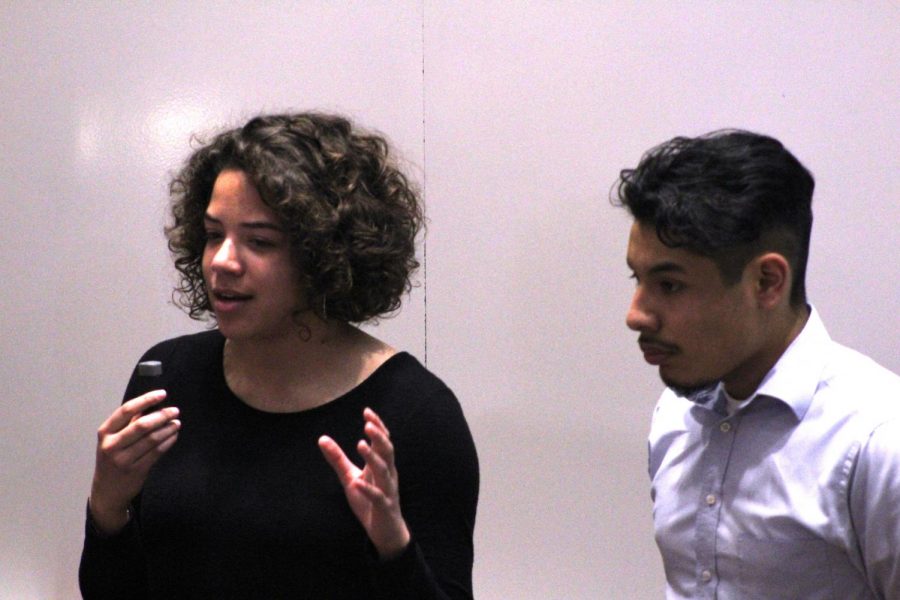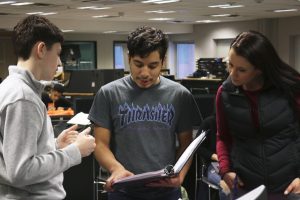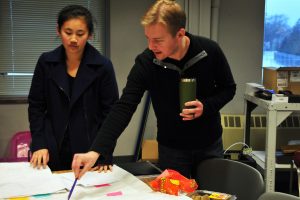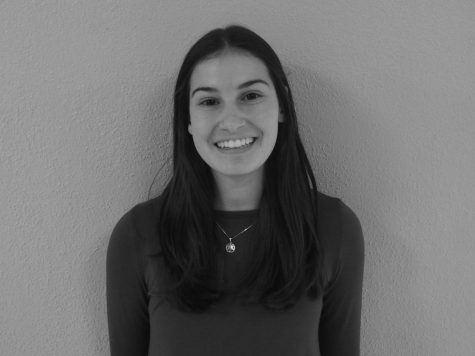ACE presents at University of Minnesota
Club builds playground, competes against other schools
Junior Zoe Younger presents a portion of her group’s architectural project for the Architecture Construction Engineering (ACE) Mentor Program. Student members of ACE presented a construction proposal to many other ACE groups around the metro area March 27. Park’s ACE team did not place in their presentation, but two members won significant monetary scholarships.
April 12, 2019
While Park did not place at the ACE competition at the University of Minnesota, for junior Zoe Younger the event was still a success. According to Younger, she received a scholarship at the event along with another Park ACE member.
“(The ACE organization) chooses who they thought had the best essays and contributed the most to their group,” Younger said. “If you want to use the scholarship you have to be in architecture, construction or engineering. Otherwise, I don’t think you can use it.”
According to ACE adviser Al Wachutka, the club presented its plans to a panel of three judges who work in the industry of architecture, construction or engineering March 27 at the University of Minnesota.
“We’re all given the same location — outdoor playscape is the topic. Everyone will present their plans and share the process, idea development, cost analysis and functionality of their playscape,” Wachutka said.
Wachutka said the project offers students flexibility as it gives very few limitations for their plan.
“The criteria are usually pretty open. It has to be a playscape, but they don’t deal with an intended demographic or an intended outcome, so it’s really open it can be very big in scope or it can be limited in scope,” Wachutka said. “But there’s always criteria that are about cost factors. Like this one, there has to be some way of earning back I think it’s 10 percent of the cost so there has to be some revenue generation but I don’t know that there were any other limitations.”
According to Wachutka, the group divvies up responsibility based on each member’s interest.
“We always have a project manager and they are the person who makes sure that each other group is taking care of their business,” Wachutka said. “Some are interested in the design and architecture side of things, someone has to be responsible for the financials, someone has to be responsible for logistics.”
Younger said she worked on multiple aspects of the project.
“I worked with Yonah Davis a lot on the concert pavilion but then towards the end, I started looking at different sustainability aspects, and then I also made budget breakdowns that had different divisions and I also made how we would get our revenue as well,” Younger said.
Younger said the panel of judges asked questions about the plans each group presented.
“For ours they asked us to elaborate more on some of our ideas on sustainability but for other groups, it was a little bit more about their budget or a certain idea that they hadn’t explained clearly but usually they were pretty easy questions,” Younger said.
Wachutka said the club started out with 15 people working on the project but the group has narrowed down to five since then.
“That’s kind of the way it goes every year. It’s a commitment and if you miss a couple weeks and you come back, you don’t feel like you’re a part of it anymore because things have moved on,” Wachutka said.
While working on the project itself can provide benefits for students, Wachutka said he sees the biggest takeaway for students is the ability to work with adult mentors.
“The biggest benefit is really just sitting down with adults who are in the industry in answering questions that you may have that are not project-related at all to hear what they’re doing and what their pathway was to get there,” Wachutka said







